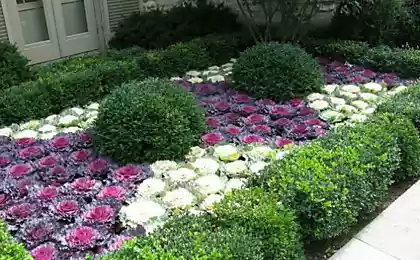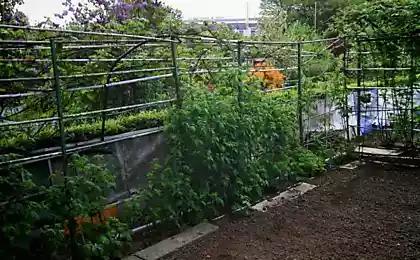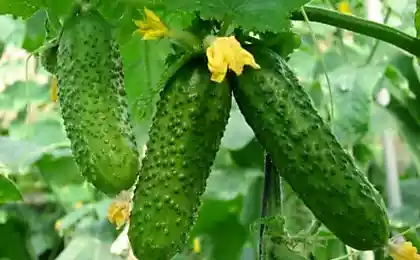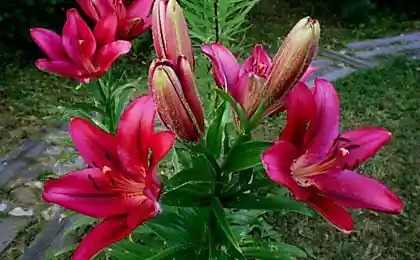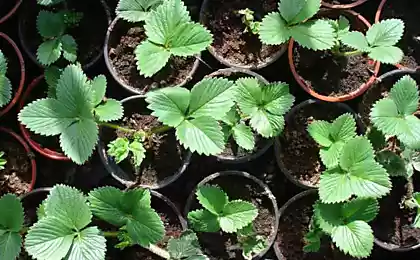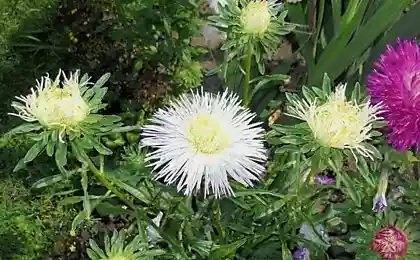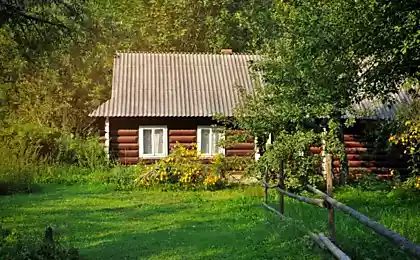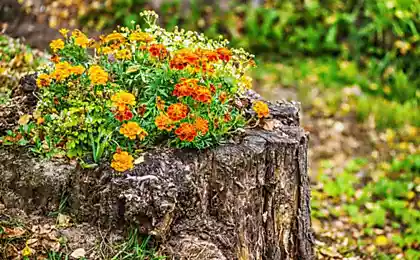674
Magnolia — the tree of chastity in Your area
Magnolia tree with incredibly beautiful flowers, which will decorate your garden, make it bright and expressive, filled with alluring vanilla-lemon scent. And do not be afraid of its possible moodiness: I will try to dispel all doubts and will share the intricacies of growing and caring for Magnolia.
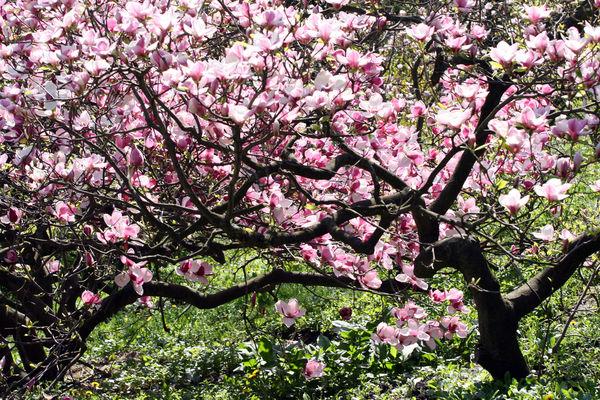
The symbol of virginal purity in China, Magnolia in high esteem and we. Her extraordinary beauty and delightful scent, has long been admired.

In the middle lane it begins to bloom in April, when most trees are not even covered with leaves. Apparently, therefore, huge flowers cause surprise and delight. Although Magnolia is valued not only for beauty. Its leaves, flowers, fruits and even the bark contain essential oils — a unique antiseptic hypertension, rheumatism and diseases of the digestive system.
Magnolia (named after the famous botanist P. Magnola) is one of the brightest representatives of the Magnolia family, which has over 70 species. Her luxury tree with a broad pyramidal or spherical crown can reach 5-8 or even 20 m in height. Depending on the variety, flowers may be white, pink, purple, red and even purple. However, of the 120 varieties to grow in the middle lane can only a few (the rest are really naughty and just will not survive our harsh winters): Magnolia Kobus (kobus Magnolia), star Magnolia (Magnolia stellata) and some of their hybrids. Later we will examine them in detail, but for now let's discuss the nuances of growing this amazing plant.
Planting magnoliasBefore planting the Magnolia, you need to choose the right plant: it must be a closed root system. What else to look for when selecting seedlings, you can read in the article:

A place to land is determined in advance, given that the Magnolia:
prefers protected from winds and draughts areas; does not tolerate heavily limed soils: these roots almost never develop and can die. If the soil in your yard is such, mix it with acidic peat will reduce pH; grows poorly on heavy, waterlogged and sandy soils. The best place for planting should be Sunny, in the southern region is slightly prichenennye plot with a light fertile soil.
Regarding the timing of planting, many gardeners agree that planting a Magnolia tree is better in autumn, when the young plants have already stopped growing, as if "falling into sleep". Autumn planting should be done in mid-late October, when the severe frosts and the unbearable heat is gone.
Regarding spring planting of disagreement. Some gardeners believe that the young seedlings of the Magnolia, like most trees, can be planted in the spring in April. The second assert that even a small returnable frosts can cause already started into growth trees irreparable harm, after which rehabilitation will be long and likely ineffective. To listen to such contradictory opinions or not — to solve only to you. But think if the risk is warranted: it is properly planted in the autumn sapling almost 100% accustomed.
By the place, start preparing the planting hole. Note that the size of the hole should be three times larger than the volume of the root system of the seedling. After removing the required amount of soil, mix it with rotted compost. If the soil is too dense, add a little sand. Prepared soil mixture, place the seedling in the planting hole, in any case, not buried root collar, and cover it with the mixture, so that around the trees was a small hole. Then lightly sealing the ground in the hole and carefully pour. As soon as the water soaks into the ground, tree trunks mulching with peat/sand or disguised bark of conifers.
Reproduction MagnoliaMagnolia is easily propagated vegetatively: vaccinations, layering and cuttings, but you may want to try to grow this plant from seed. Let's consider each of the options:
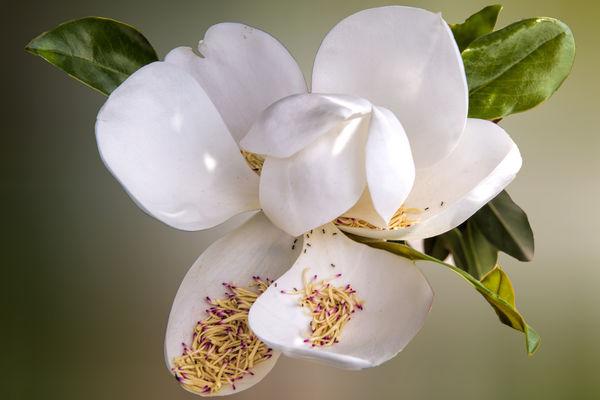
How to grow Magnolia from seed?To sow the seeds of Magnolia better immediately after harvest, in the fall, as to keep them until spring quite difficult. Because the seeds are covered with very dense, oily wrapper, they must first scarify, that is, to mechanically break up the shell (to nagpalit or chipped). After scarification the seeds of Magnolia are washed in mild soapy water to remove the oily layer and rinsed in clean water. Sowing the seeds to a depth of 3 cm in boxes with a universal substrate, remove them to the cellar until spring. In early March, boxes with seeds move on the window sill, constantly make sure that the substrate doesn't dry out, and wait for germination.
To grow young seedlings of Magnolia for the first time will not be very fast: during the first year of life they reach somewhere in the 20-50 cm Only after one year the seedlings can be thinned and planted in the beds with a light peaty soil.
Reproduction Magnolia layering and by cuttings (vegetative)Vegetative propagated Magnolia better in the first years of life, so it will grow very quickly.
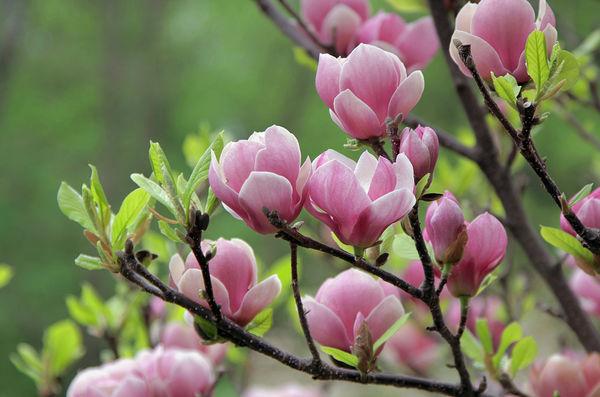
Magnolia is easily propagated by layering. This spring is sufficient to bend down, cover with soil and pinned part of the low branches, and after 1-2 years on this thread formed strong roots. After the formation of nucleus roots carefully separated from the mother plant and "move" into a nursery for rearing.
There is nothing complicated in the propagation of Magnolia semilignified cuttings, but the success of the experiment is guaranteed only in the case if you have a greenhouse. Well, or her smaller version — the mini-greenhouse with bottom heating of the soil. Only in the mini-greenhouse you can regulate the temperature and humidity, which is extremely important when propagating magnolias in this way.
The best time for propagation of magnolias by cuttings — the end of June, at this time it is actively growing. Cuttings are cut from young plants at the top of each leave at the 2-3 leaf and the lower part is treated with any stimulant rooting. Then they are planted in a container with a sand substrate (sand or half mixed with perlite/peat), which should always be moderately moist, cover with a lid and provide a temperature mode in the range of 19-22 °C. a lower/higher temperatures and drying of the substrate will lead to the death of the cuttings. Cuttings of almost all magnolias are beginning to take root after about 7-8 weeks, the only exceptions are the cuttings of Magnolia grandiflora, which rooting takes about 4 months. In the open ground grown rooted seedlings planted only a year later.
Care Magnolia treeMagnolia fair is not very demanding in care of a plant. But still some attention to her.
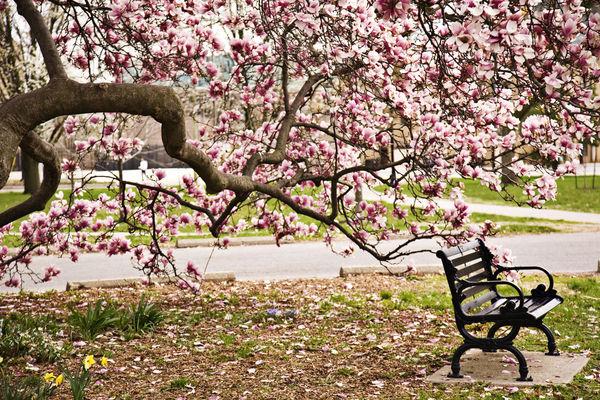
WateringMagnolia is very exacting to humidity of soil, especially in the first three years of life. Therefore, it is necessary to water it very often and plentifully, and in very hot weather — to prevent drying of the soil. Retain moisture help not only the glaze, but mulching: it perfectly insulates roots (which is especially important in winter) and serves as a source of nutrients, while improving soil structure and greatly reducing skin dryness.
The shelterDespite the fact that Magnolia, which we have cultivated (Kobus, stellata and hybrids) hardy, shelter she was not hurt. Even small recurrent frosts can harm the one-year shoots and flower buds. To avoid morozovoy, simply wrap the trunks in 2 layers of burlap. But remember: this should be done very carefully, very fragile Magnolia branches! In need of shelter and tree trunks of the tree, only to hide it must be late autumn, after the ground lightly freezes: the only way the shelter will not be able to build his house of the mouse.
PruningIf a little freezing could not be avoided, and the tops of the branches were still frozen, it is necessary to carry out pruning to healthy wood and place slices obscure garden pitch. In addition, you need to trim all the damaged, dry and crisscross inside the crown branches. But in the formative pruning of Magnolia is not needed.
Fertilizer and fertilizing Magnolia, Although Magnolia is very responsive to fertilization, in the first 2 years of life to feed her is not recommended. But a three-year seedlings of Magnolia already require additional intake of nutrients, so fertilization would be very helpful. To fertilize it is necessary from early spring until the end of August. Nitrogen, which increase the tendency of plants to frost, apply only to mid-July.
Fertilizer can be prepared independently, using 20 g of ammonium nitrate, 15 g urea and 1 kg of mullein, diluted in 10 liters of water. Consumption of fertilizers under 1 tree is 40 L.
You can also use a solution of complete fertilizer “Kemira-Universal”, making the bucket of water I dissolve 1 tbsp of the drug. There are also a range of fertilizers designed specifically for feeding Magnolia: for example, AGRECOL "Magnolia".
And remember: everything is good in moderation. This is true for fertilizers, the excess of which is detrimental to the plant. If overdose does occur, which can be determined by drying at the end of July, the old leaves, try to fix it with weekly copious irrigation.
Pests
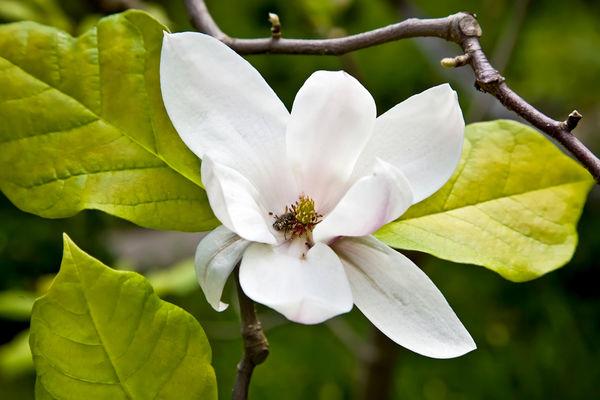
Rodents and moles can cause Magnolia irreparable harm. First gnaw the root neck of a plant and its roots, and the second undermining the roots. And if you find that the barrel is damaged, treat wounds 1% solution of fundazol.
Much harm can and spider mites, which aktiviziruyutsya during a drought. The pest feeds on the underside of the leaves, completely sucking out their juices, which leads to their death.
Species and varieties of Magnolia Magnolia can be deciduous and evergreen. The first responds to changes in temperature only a change in the timing of flowering, and the second to withstand heavy frosts are not able to do so in the middle lane it is cultivated only in greenhouses to a certain temperature.
Among 120 varieties of magnolias there aren't too many winter-hardy and relatively hardy varieties. So, for hardy varieties, which easily can be grown in the middle lane are: Magnolia Kobus (kobus Magnolia), star Magnolia (Magnolia stellata) and a hybrid of star Magnolia and Kobus Magnolia Loebner.
Relatively hardy, whose extreme cold will freeze slightly only part of the flower buds are garden forms of the ash and Solana.
Magnolia Kobus (kobus Magnolia)Trees Magnolia Kobus varieties reaching 8-12 m in height and have unusual foliage, which in the first years of life has a pyramidal shape, with age changing to spherical.
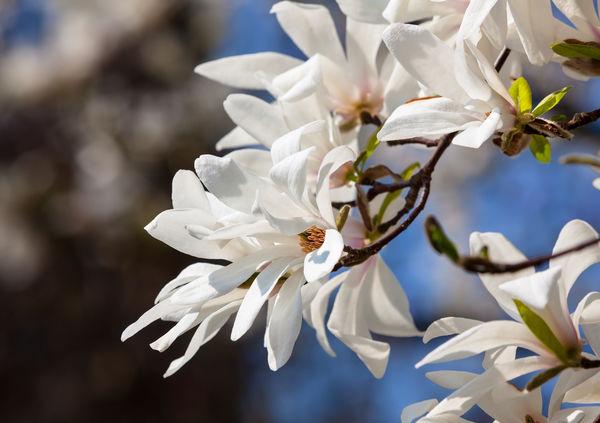
Magnolia Kobus is justly considered the most hardy and easy to care varieties, but cultivated it we have rarely. But here's the thing: shoot seeds up to the period, while the tree will delight with its color, will be about 30 years. Although knowing how to wait will be rewarded handsomely: in addition, Magnolia Kobus varieties are undemanding in care, in April-may it will delight you with incredibly beautiful white flowers with a purple base. Dark green leaves in autumn are painted in yellow-brown color and fall off only to mid-autumn.
The star Magnolia (Magnolia stellata)is most Often a tree, rarely shrub, up to 5-6 m high, with spherical or oval crown, Magnolia stellata in width reaches 4.5 and even 5 m During the flowering Magnolia stellata exudes a very pleasant, enveloping and persistent flavor.
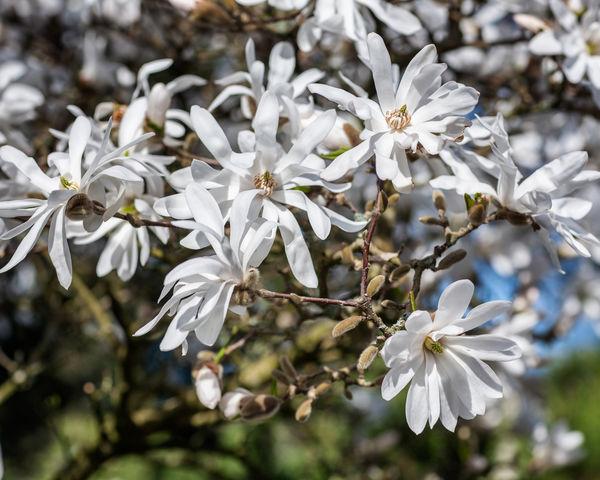
And the star Magnolia blooms before the others in March and April, after which the whole tree is covered with dark green leaves up to a length of 7-10 cm, which in autumn are bronze-yellow.
Loebner Magnolia (Magnolia x loebneri)Loebner Magnolia is a hybrid of Magnolia Kobus and star, who took the best from its parents: the endurance and beauty of the crown of the first and the intoxicating aroma of the second.
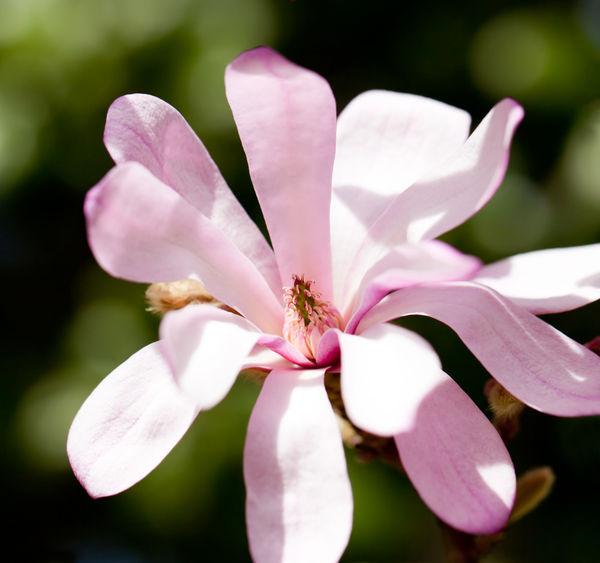
Loebner Magnolia tree with a rounded crown, reaching a height of 9 m. the Fragrant flowers of Magnolia x loebneri, white with slightly pinkish tinge, bloom in April, and all the green summer leaves, as well as Magnolia stellate, the fall of yellow-bronze color.
Solana Magnolia (Magnolia x soulangeana)is most Often found in our markets Magnolia of Solange.
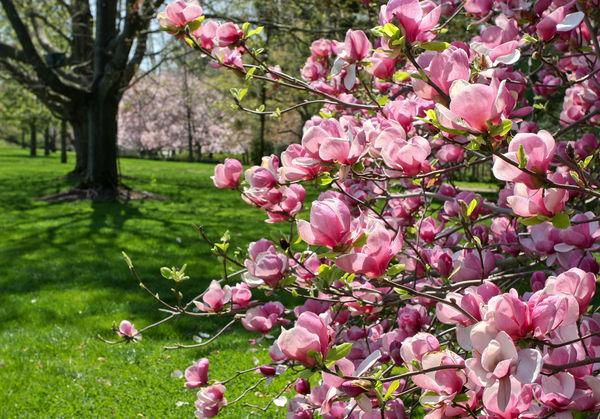
It is a 5-10-foot tree, in April and may covered with a continuous carpet of fragrant pink-purple flowers with a diameter of 10-25 cm, which resemble tulips. Dark green leaves Magnolia Sulanga fall to become dirty yellow.
Magnolia ash (Magnolia macrophylla ssp.ashei)is One of the most beautiful and hardy deciduous Magnolia — Magnolia ash — will delight you with rapid flowering already for 2-5 year of life.
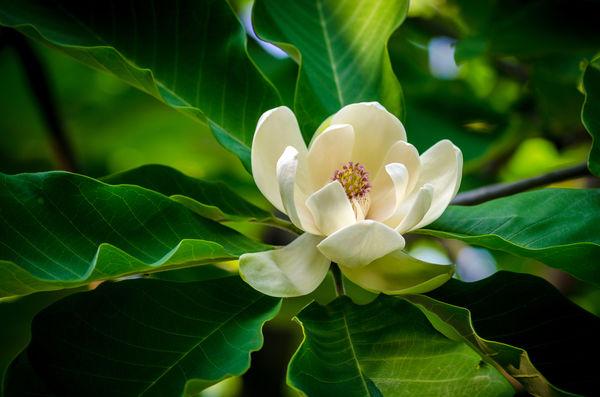
The Magnolia tree ash reaches a height of 5 and sometimes 7 meters, and almost never suffers from the return of frost. And the thing is that it blooms much later than the other species in the middle and sometimes toward the end of may. In addition, the flowering lasts much longer than the early flowering. Huge white with a cream shade flowers reach a diameter of 25, and sometimes 30 cm, and the amazing leaves of tropical species reach a length of 50-70 cm published
P. S. And remember, only by changing their consumption — together we change the world! ©
Source: /users/1077

The symbol of virginal purity in China, Magnolia in high esteem and we. Her extraordinary beauty and delightful scent, has long been admired.

In the middle lane it begins to bloom in April, when most trees are not even covered with leaves. Apparently, therefore, huge flowers cause surprise and delight. Although Magnolia is valued not only for beauty. Its leaves, flowers, fruits and even the bark contain essential oils — a unique antiseptic hypertension, rheumatism and diseases of the digestive system.
Magnolia (named after the famous botanist P. Magnola) is one of the brightest representatives of the Magnolia family, which has over 70 species. Her luxury tree with a broad pyramidal or spherical crown can reach 5-8 or even 20 m in height. Depending on the variety, flowers may be white, pink, purple, red and even purple. However, of the 120 varieties to grow in the middle lane can only a few (the rest are really naughty and just will not survive our harsh winters): Magnolia Kobus (kobus Magnolia), star Magnolia (Magnolia stellata) and some of their hybrids. Later we will examine them in detail, but for now let's discuss the nuances of growing this amazing plant.
Planting magnoliasBefore planting the Magnolia, you need to choose the right plant: it must be a closed root system. What else to look for when selecting seedlings, you can read in the article:

A place to land is determined in advance, given that the Magnolia:
prefers protected from winds and draughts areas; does not tolerate heavily limed soils: these roots almost never develop and can die. If the soil in your yard is such, mix it with acidic peat will reduce pH; grows poorly on heavy, waterlogged and sandy soils. The best place for planting should be Sunny, in the southern region is slightly prichenennye plot with a light fertile soil.
Regarding the timing of planting, many gardeners agree that planting a Magnolia tree is better in autumn, when the young plants have already stopped growing, as if "falling into sleep". Autumn planting should be done in mid-late October, when the severe frosts and the unbearable heat is gone.
Regarding spring planting of disagreement. Some gardeners believe that the young seedlings of the Magnolia, like most trees, can be planted in the spring in April. The second assert that even a small returnable frosts can cause already started into growth trees irreparable harm, after which rehabilitation will be long and likely ineffective. To listen to such contradictory opinions or not — to solve only to you. But think if the risk is warranted: it is properly planted in the autumn sapling almost 100% accustomed.
By the place, start preparing the planting hole. Note that the size of the hole should be three times larger than the volume of the root system of the seedling. After removing the required amount of soil, mix it with rotted compost. If the soil is too dense, add a little sand. Prepared soil mixture, place the seedling in the planting hole, in any case, not buried root collar, and cover it with the mixture, so that around the trees was a small hole. Then lightly sealing the ground in the hole and carefully pour. As soon as the water soaks into the ground, tree trunks mulching with peat/sand or disguised bark of conifers.
Reproduction MagnoliaMagnolia is easily propagated vegetatively: vaccinations, layering and cuttings, but you may want to try to grow this plant from seed. Let's consider each of the options:

How to grow Magnolia from seed?To sow the seeds of Magnolia better immediately after harvest, in the fall, as to keep them until spring quite difficult. Because the seeds are covered with very dense, oily wrapper, they must first scarify, that is, to mechanically break up the shell (to nagpalit or chipped). After scarification the seeds of Magnolia are washed in mild soapy water to remove the oily layer and rinsed in clean water. Sowing the seeds to a depth of 3 cm in boxes with a universal substrate, remove them to the cellar until spring. In early March, boxes with seeds move on the window sill, constantly make sure that the substrate doesn't dry out, and wait for germination.
To grow young seedlings of Magnolia for the first time will not be very fast: during the first year of life they reach somewhere in the 20-50 cm Only after one year the seedlings can be thinned and planted in the beds with a light peaty soil.
Reproduction Magnolia layering and by cuttings (vegetative)Vegetative propagated Magnolia better in the first years of life, so it will grow very quickly.

Magnolia is easily propagated by layering. This spring is sufficient to bend down, cover with soil and pinned part of the low branches, and after 1-2 years on this thread formed strong roots. After the formation of nucleus roots carefully separated from the mother plant and "move" into a nursery for rearing.
There is nothing complicated in the propagation of Magnolia semilignified cuttings, but the success of the experiment is guaranteed only in the case if you have a greenhouse. Well, or her smaller version — the mini-greenhouse with bottom heating of the soil. Only in the mini-greenhouse you can regulate the temperature and humidity, which is extremely important when propagating magnolias in this way.
The best time for propagation of magnolias by cuttings — the end of June, at this time it is actively growing. Cuttings are cut from young plants at the top of each leave at the 2-3 leaf and the lower part is treated with any stimulant rooting. Then they are planted in a container with a sand substrate (sand or half mixed with perlite/peat), which should always be moderately moist, cover with a lid and provide a temperature mode in the range of 19-22 °C. a lower/higher temperatures and drying of the substrate will lead to the death of the cuttings. Cuttings of almost all magnolias are beginning to take root after about 7-8 weeks, the only exceptions are the cuttings of Magnolia grandiflora, which rooting takes about 4 months. In the open ground grown rooted seedlings planted only a year later.
Care Magnolia treeMagnolia fair is not very demanding in care of a plant. But still some attention to her.

WateringMagnolia is very exacting to humidity of soil, especially in the first three years of life. Therefore, it is necessary to water it very often and plentifully, and in very hot weather — to prevent drying of the soil. Retain moisture help not only the glaze, but mulching: it perfectly insulates roots (which is especially important in winter) and serves as a source of nutrients, while improving soil structure and greatly reducing skin dryness.
The shelterDespite the fact that Magnolia, which we have cultivated (Kobus, stellata and hybrids) hardy, shelter she was not hurt. Even small recurrent frosts can harm the one-year shoots and flower buds. To avoid morozovoy, simply wrap the trunks in 2 layers of burlap. But remember: this should be done very carefully, very fragile Magnolia branches! In need of shelter and tree trunks of the tree, only to hide it must be late autumn, after the ground lightly freezes: the only way the shelter will not be able to build his house of the mouse.
PruningIf a little freezing could not be avoided, and the tops of the branches were still frozen, it is necessary to carry out pruning to healthy wood and place slices obscure garden pitch. In addition, you need to trim all the damaged, dry and crisscross inside the crown branches. But in the formative pruning of Magnolia is not needed.
Fertilizer and fertilizing Magnolia, Although Magnolia is very responsive to fertilization, in the first 2 years of life to feed her is not recommended. But a three-year seedlings of Magnolia already require additional intake of nutrients, so fertilization would be very helpful. To fertilize it is necessary from early spring until the end of August. Nitrogen, which increase the tendency of plants to frost, apply only to mid-July.
Fertilizer can be prepared independently, using 20 g of ammonium nitrate, 15 g urea and 1 kg of mullein, diluted in 10 liters of water. Consumption of fertilizers under 1 tree is 40 L.
You can also use a solution of complete fertilizer “Kemira-Universal”, making the bucket of water I dissolve 1 tbsp of the drug. There are also a range of fertilizers designed specifically for feeding Magnolia: for example, AGRECOL "Magnolia".
And remember: everything is good in moderation. This is true for fertilizers, the excess of which is detrimental to the plant. If overdose does occur, which can be determined by drying at the end of July, the old leaves, try to fix it with weekly copious irrigation.
Pests

Rodents and moles can cause Magnolia irreparable harm. First gnaw the root neck of a plant and its roots, and the second undermining the roots. And if you find that the barrel is damaged, treat wounds 1% solution of fundazol.
Much harm can and spider mites, which aktiviziruyutsya during a drought. The pest feeds on the underside of the leaves, completely sucking out their juices, which leads to their death.
Species and varieties of Magnolia Magnolia can be deciduous and evergreen. The first responds to changes in temperature only a change in the timing of flowering, and the second to withstand heavy frosts are not able to do so in the middle lane it is cultivated only in greenhouses to a certain temperature.
Among 120 varieties of magnolias there aren't too many winter-hardy and relatively hardy varieties. So, for hardy varieties, which easily can be grown in the middle lane are: Magnolia Kobus (kobus Magnolia), star Magnolia (Magnolia stellata) and a hybrid of star Magnolia and Kobus Magnolia Loebner.
Relatively hardy, whose extreme cold will freeze slightly only part of the flower buds are garden forms of the ash and Solana.
Magnolia Kobus (kobus Magnolia)Trees Magnolia Kobus varieties reaching 8-12 m in height and have unusual foliage, which in the first years of life has a pyramidal shape, with age changing to spherical.

Magnolia Kobus is justly considered the most hardy and easy to care varieties, but cultivated it we have rarely. But here's the thing: shoot seeds up to the period, while the tree will delight with its color, will be about 30 years. Although knowing how to wait will be rewarded handsomely: in addition, Magnolia Kobus varieties are undemanding in care, in April-may it will delight you with incredibly beautiful white flowers with a purple base. Dark green leaves in autumn are painted in yellow-brown color and fall off only to mid-autumn.
The star Magnolia (Magnolia stellata)is most Often a tree, rarely shrub, up to 5-6 m high, with spherical or oval crown, Magnolia stellata in width reaches 4.5 and even 5 m During the flowering Magnolia stellata exudes a very pleasant, enveloping and persistent flavor.

And the star Magnolia blooms before the others in March and April, after which the whole tree is covered with dark green leaves up to a length of 7-10 cm, which in autumn are bronze-yellow.
Loebner Magnolia (Magnolia x loebneri)Loebner Magnolia is a hybrid of Magnolia Kobus and star, who took the best from its parents: the endurance and beauty of the crown of the first and the intoxicating aroma of the second.

Loebner Magnolia tree with a rounded crown, reaching a height of 9 m. the Fragrant flowers of Magnolia x loebneri, white with slightly pinkish tinge, bloom in April, and all the green summer leaves, as well as Magnolia stellate, the fall of yellow-bronze color.
Solana Magnolia (Magnolia x soulangeana)is most Often found in our markets Magnolia of Solange.

It is a 5-10-foot tree, in April and may covered with a continuous carpet of fragrant pink-purple flowers with a diameter of 10-25 cm, which resemble tulips. Dark green leaves Magnolia Sulanga fall to become dirty yellow.
Magnolia ash (Magnolia macrophylla ssp.ashei)is One of the most beautiful and hardy deciduous Magnolia — Magnolia ash — will delight you with rapid flowering already for 2-5 year of life.

The Magnolia tree ash reaches a height of 5 and sometimes 7 meters, and almost never suffers from the return of frost. And the thing is that it blooms much later than the other species in the middle and sometimes toward the end of may. In addition, the flowering lasts much longer than the early flowering. Huge white with a cream shade flowers reach a diameter of 25, and sometimes 30 cm, and the amazing leaves of tropical species reach a length of 50-70 cm published
P. S. And remember, only by changing their consumption — together we change the world! ©
Source: /users/1077
Vis on the door straighten and stretch the spine
13 recipes for those who don't know what to do with cucumbers





